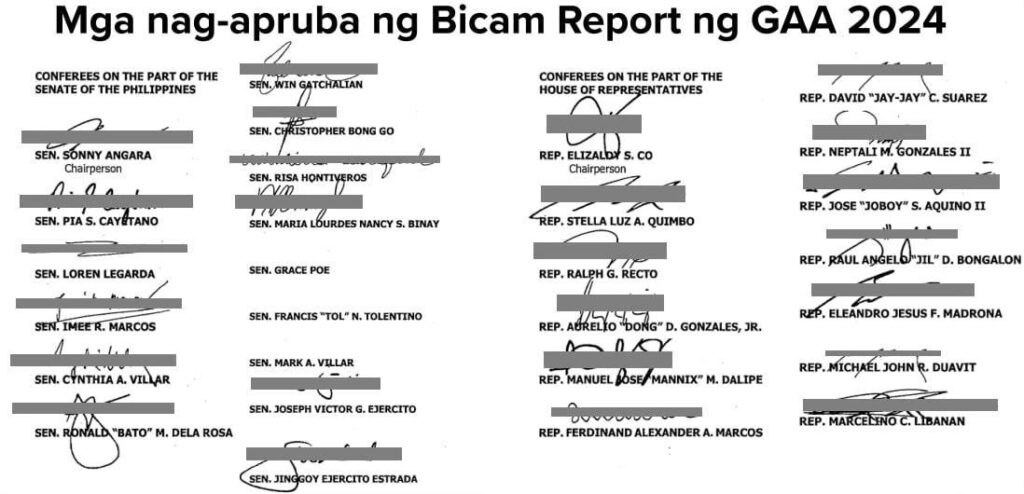By Raffy Gutierrez
Flood control is supposed to be about protecting lives, not lining pockets. Yet the recent revelations about billions lost to alleged DPWH “ghost projects” expose how the absence of transparent, technology-driven safeguards created the perfect breeding ground for corruption. While the engineering side of flood control is crucial, the scandal highlights a different problem: the government’s failure to apply existing digital tools and innovations that could have prevented this shameless scam.
First, let’s talk about geotagging and satellite verification. For years, private companies like Google and Maxar have provided near-real-time satellite imaging at commercial rates. If every DPWH project site had been geotagged and cross-checked via public satellite feeds, ghost projects would have been exposed immediately. No need for whistleblowers or lengthy audits—just digital footprints showing if a levee, drainage, or floodway really exists.
Second, blockchain-based procurement could have plugged funding leaks. Imagine if every peso allocated to flood control were recorded on a tamper-proof ledger accessible to both COA and the public. Contractors could not claim funds without digitally signing off progress milestones verified by drones or IoT sensors. This alone would have stopped projects from existing “only on paper,” because the chain of evidence would require proof of work before payment.
Third, AI-driven anomaly detection should already be a standard in DPWH’s accounting systems. With ₱2 trillion spent over 15 years, machine learning could easily spot patterns like repeated contracts to shell companies, projects clustered in low-population areas, or suspicious overpricing of drainage canals. Other countries use AI to track tax evasion and procurement fraud. Why can’t we apply the same for flood control?
Fourth, open data dashboards are low-hanging fruit. A simple government website showing all ongoing flood control projects, with budgets, completion percentages, contractor names, and geotagged photos, could have empowered citizens to act as watchdogs. Instead, the system stayed opaque, leaving room for manipulation. In the age of cloud platforms and real-time project trackers, secrecy is not incompetence—it’s complicity.
Fifth, let’s not ignore drones and IoT monitoring. A ₱50,000 drone with a 4K camera could have surveyed kilometers of supposed flood control sites in minutes. Combined with IoT water flow sensors in river basins, the government could have had both proof of construction and functional data on whether projects worked. Instead of these low-cost, high-impact solutions, taxpayers got excuses and missing projects.
Sixth, digital citizen feedback loops could have been institutionalized. Platforms like “sumbongsapangulo.ph” are a start, but imagine a mobile app where any Filipino can snap a photo of an incomplete project, auto-tag its location, and upload it to a public dashboard. Technology makes bottom-up accountability easy, but without political will, these tools never see the light of day.
Seventh, we must recognize the elephant in the room: the absence of a nationwide flood control master plan, digitized and time-bound. Even in 2025, DPWH admitted that no integrated roadmap exists. This means no digital project tracker, no unified timeline, and no cross-basin coordination system. Tech thrives on integration, but here we have fragmentation that breeds inefficiency and corruption.
Eighth, the scam underscores why digital transformation in governance is not optional. It is not about fancy apps or buzzwords—it is about preventing tragedies. Every missing drainage system is a flooded barangay. Every ghost levee is a family losing their home. The absence of digital safeguards isn’t just bad IT management—it is life and death negligence.
Finally, the lesson is clear: infrastructure alone cannot solve flooding if the system funding it is rotten. But technology offers checkpoints—satellite eyes in the sky, blockchain audit trails, AI anomaly detectors, IoT sensors, and citizen apps—that can make corruption almost impossible to hide. What happened in DPWH’s flood control program is not just a civil engineering failure; it is a digital governance failure. And until the Philippines commits to embedding advanced tech checkpoints into every billion-peso project, ghost projects will keep haunting us every rainy season.
Can we still entrust this fight to a technology department that many already see as ineffective and irrelevant? Or is it time for government to create an entirely new, dedicated agency to finally champion digital governance and accountability? In the end, the question that will define President Marcos Jr.’s legacy is stark: will he go down in history as “The Ghost Project President,” or as the leader who brought long-overdue justice to the flood control scam and proved that technology can finally be a weapon against corruption?
_____________________
Rafael “Raffy” Gutierrez is a Technology Trainer with over 25 years of experience in networking, systems design, and diverse computer technologies. He is also a popular social media blogger well-known for his real-talk, no-holds-barred outlook on religion, politics, philosophy.




